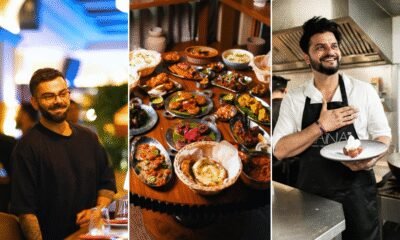Restaurants & Food
23 New Restaurants In India To Visit In 2025 If You Haven’t Already
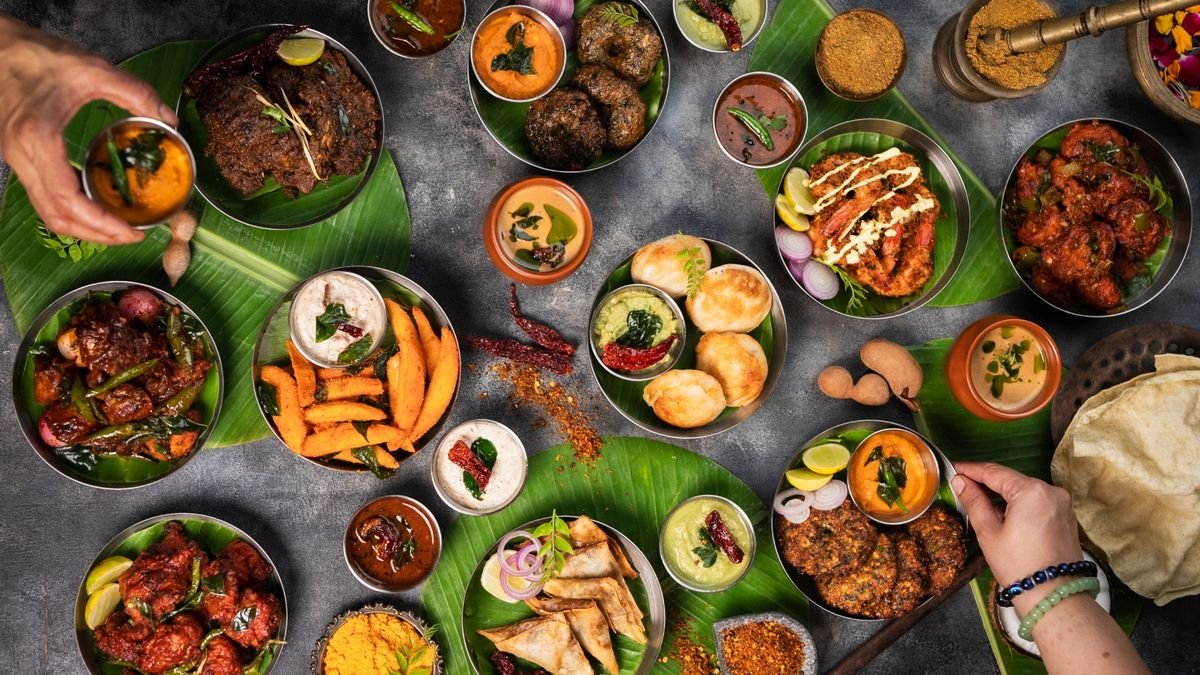
The year 2024 has been a sizzling one for new restaurant openings across India, with quite a few exciting spots just making their debut in December – meaning your January dining plans are already sorted! If you’re a foodie eager to explore the latest culinary gems in your city, you’re in the right place.
We’ve rounded up the must-visit new restaurants that are sure to spice up your dining adventures. Bon appétit!
1. Banng, Gurugram
Chef Garima Arora, the only Indian woman to helm a 2-Michelin-starred restaurant, is shaking things up. After the success of Gaa in Bangkok, she’s bringing her flair for innovation to India with Banng—a vibrant new restaurant in Gurugram created in partnership with Riyaaz Amlani. While Gaa showcases Indian cuisine, Banng flips the script, delivering bold Thai flavours to the heart of India.
The dining experience at Banng invites you to eat like the Thais do, with traditional and playful dishes. Highlights include the Banng’ing Omelet (Khai Jeaw) with a crunchy salad of Chinese celery and a sweet, sour, and spicy dressing, and the quirky Tom Kha Pani Puri, a chilled coconut broth with mushrooms and herbs served in crispy puris. The fun continues at the bar with Attapon De-Silva of the YOLO group creating a cocktail program inspired by the art of Muay Thai and Bangkok’s bustling fruit carts. Divided into Flyweight, Middleweight, and Heavyweight categories, the drinks range from light and refreshing to bold and spirit-forward.
2. Vanilla Miel, Mumbai
Vanilla Miel’s second outpost in Bandra is the current talk of the town. Run by sisters Isha and Mansi Shetty, this charming café is designed as a cosy, home-like retreat, inviting you to relax and recharge in a welcoming ambience.
There’s something for everyone, from bakes, coffee, and breakfast plates to indulgent desserts and petite savoury bites. Standout options include cruffers (mini cruffins), a prawn brioche roll, a truffle mushroom tart, and the delightful fondue tree. The café’s coffee program features beans sourced from Chikkamagaluru, while teas are sourced from an estate in Palampur, ensuring every sip and bite is packed with flavour. Whether you’re in the mood for a quick pick-me-up or a leisurely chat, Vanilla Miel’s Bandra café is the perfect spot to savour the moment.
3. After Dinner, Goa
This new bar in Anjuna lets you take things slow and savour the moment. Founded by Twinkle Keswani, Chef Rohan D’Souza, and Daniel Lobo, After Dinner is a cosy retreat which feels like heading to a friend’s place after a big night out. With a team known for gems like Pisco by the Beach and Lazy Goose, After Dinner invites you to relax and unwind in a homely yet refined ambience with delectable bites and sips. Highlights from the tapas style include Old School Tempura Sichuan Pepper River Prawn with soy-ginger dressing, Living Room Chicken Hot Dog Brioche Buns with caramelised onions and fennel cabbage sauerkraut, and sweet treats like Milk Chocolate Ganache & Walnut Profiteroles with macerated berries.
Mixologist Harsh Pandya’s creations turn cocktails into experiences, each inspired by a room in a house. For instance, the playful drink Lollipops and Rainbows is served with a teddy bear, Pandan-Infused Negroni is deep and earthy, channelling the study, and Something Saucy is a spicy-sweet tequila blend with coconut caviar.
4. Bastian Chinois, Mumbai
Keep ‘em coming – there’s another Bastian in town! Bastian Chinois is the first progressive Szechuan restaurant with legendary Chef Hemant Oberoi at its helm. The 6000 sq. ft., 200-seater space includes an open-air mezzanine for pre- or post-dinner drinks. Unlike the signature earthy tones, the interiors feature a bold black-and-white theme, mosaic dragon flooring, backlit bars, and a maximalist vibe with mismatched chairs, oversized lamps and sculptures like the Chinese mermaid mascot.
Dig into Szechuan flavours with innovative presentations like Chicken Tien Chilli Bowl with Tian chilli, Beijing Duck Artisanal Plate, served with a Hoisin “paintbrush,” and Flying Noodles with chopsticks “floating” in the air. Pastry Chef Dhiraj Jankar and Chef Oberoi craft indulgent yet refined options like: Sesa-Misu (mousse, toffee, and sesame crack), Rock n Roll (fortune cigar with chocolate mascarpone) and Darsaan (fried noodles with honey and sesame seeds). Complement your meal with Asian-inspired cocktails featuring ingredients like ginseng, tea infusions, and Chinese spices.
5. Cacaoté, Ahmedabad
Say hello to Ahmedabad’s newest indulgence: Cacaoté, a luxury chocolate and pastry boutique that’s as chic as it is delicious. Designed by Storm Worldwide and LEQB studio, this sprawling 15,000-square-foot space is home to a stunning pâtisserie and brasserie, where Michelin-starred Chef Jonathan Gallet works his magic. Think gourmet cakes, dreamy chocolates, and irresistible macarons crafted with the finest ingredients and cutting-edge techniques.
Founded by the dynamic mother-son duo Vraj and Rita Patel, Cacaoté brings Belgian chocolate heritage to India in style. Signature treats like Blissful Bonbons, Petite Gateaux, and Marvellous Macarons are made with premium Valrhona cocoa, sourced from tropical regions and transformed into edible art. Whether you’re in it for the sweets or just the vibe, Cacaoté promises to make every visit feel like a special occasion.
6. Across, Mumbai
This recently opened regional dining destination in Kala Ghoda brings Himalayan cuisine with a modern twist to your plate. Led by chefs Viraf Patel and Prakriti, Across blends traditional flavours with innovative techniques, spotlighting the unique ingredients and heritage of the Eastern Himalayas. Spices and seasonings are sourced directly from Himalayan regions to preserve authentic flavours. The must-try dishes that capture the soul of Himalayan cuisine include: Corn & Nettle Soup topped with Himalayan wild chives, Buckwheat Fries with salyan timur, chili, and charred tomato chutney, Fry Bread (Tibetan flatbread with Kalimpong cheese), Buff Choila (Smoked buff with bold spices and nutty red rice flakes), Lentil Pancakes (Savory black lentil pancakes with poached eggs) and Big Plates (Festive 9 Bean Stew, Mushroom Thukpa, Himalayan Trout, and Buff Kheema Noodles).
7. Madras Cocktail Co, Chennai
Tired of chaotic family bar scenes or deafening techno beats at every bar? Chennai’s latest F&B gem, Madras Cocktail Co. (or MadCo), is here to change the game. This speakeasy bar is perfect for catching up with friends over niche cocktails and bites—if you can find the hidden door, that is!
Once inside, you’re treated to an experience that’s all about great conversations in a cosy ambience. Sip on unique concoctions like the Espresso Martini, the tea-inspired Sulaimani Old-Fashioned, or the Mallipoo Spritz, a tribute to Chennai crafted with tequila and jasmine cordial. Pair these with delectable bites like Chinese-ish Chilli Chicken, Cheeselings jhalmuri spiced with mustard oil, or crunchy prawn heads. MadCo blends charm, creativity, and a touch of mystery—making it your next go-to spot for laid-back yet memorable evenings.
8. HyLo, Mumbai
From the former CEO of Impresario Entertainment & Hospitality Private Limited, Mayank Bhatt, comes a new space that focuses on hyperlocal Indian cuisine combining nostalgia with modernity. HyLo celebrates forgotten recipes, using locally sourced GI-tagged ingredients and traditional cooking techniques like Sigri (spitfire) Tawa (griddle), Dum (slow cooking), and Patthar (stone cooking). Dishes like the Banarasi Bedmi with crispy dal puris, Nalli Nihari with slow-cooked mutton, and Mangalorean Pomfret grilled over Sigri, offer a taste of regional Indian flavours. For comfort food, try Papadi Kebab and Lahori Tawa Chicken. And if you have a large appetite, opt for regional thalis like the Uttaranchali Thali or royal Laal Maas. Desserts like A Taste of Benaras put a modern spin on classic Indian sweets. Signature cocktails include the Forbidden Fruit with tequila and tropical fruits, Sid G with pisco and jackfruit, and the Chaiball, a twist on chai with whiskey and soda.
9. Cal-On, Kolkata
Located on the 7th floor of Hyatt Centric Ballygunge, Cal-On has officially opened its doors, offering a vibrant blend of food, drinks, and energy. This 5,202 sq. ft. rooftop venue features lush vertical gardens, chic glasshouses, and seating for 116 across elegant indoor and breezy outdoor spaces, creating the perfect setting for any occasion. Savour fusion bites like Blue Cheese Kulcha, Anda Paratha, and Kolmi No Patio, alongside sushi, wood-fired pizzas, global-inspired street bites, signature cocktails, and freshly brewed craft beers. And while you’re at it, soak in the atmosphere boasting Insta-worthy corners, peppy music, and a seamless indoor-outdoor vibe, making it perfect for gatherings and celebrations.
10. Kerala Quarters, Mumbai
Kerala Quarters brings the vibrant flavours of Kerala to life in a contemporary yet classic setting. Founded by Pankaj Gupta of Flavour Pot Foods, this restaurant highlights Kerala’s rich culinary heritage with a fresh twist, offering dishes inspired by the state’s diverse regions and traditional cooking techniques.
The menu features coastal flavours, hearty Syrian delicacies, and seafood classics like Panni Ularthiyathu (dry-roast lamb), Malabar Fried Fish, and Chemmeen Manga Curry (prawn curry with coconut and raw mango). There’s also a special focus on vegetarian dishes like the iconic Sadhya feast. The bar programme borrows inspiration from Kerala’s toddy shops where the spirit of gathering and simplicity is central. Sip on unique cocktails inspired by Kerala’s regional ingredients, served in generous 90 ml pours, including signature drinks like The Picante Curry and Agave & Vadagam.
11. Bastian Empire, Pune
Following the success of Bastian At The Top in Mumbai and Bastian Garden City in Bengaluru, Bastian enters Pune with Bastian Empire. Inspired by wabi-sabi, with textured Cappadocia-style entrances, cobblestone floors, and soaring ceilings, Bastian Empire offers a swanky dining experience and an energetic ambience. Distinct spaces cater to lively bar vibes and intimate fine dining. Nosh on Bastian favourites like Lobstaa Bomb, Mongolian Lamb, Robata Lamb Chop, Wild Mushroom Truffle Pasta and Vegan Green Curry Bowl, among others. You can’t miss the signature Lotus Kunafa Cheesecake and Pull-Me-Up Mille-Feuille. And of course, the Bastian Negroni is a must-have from the cocktail menu.
12. Hitchens, Mumbai
Mumbai’s hospitality scene has a new gem – Hitchens – Cocktails and Ideas, a chic yet laid-back resto-bar in Khar West. Inspired by the sharp wit of Christopher Hitchens, this two-level spot blends creative cocktails, bold food, and lively conversations. Founded by film producer Rakesh Singh and production designer Aparna Sud, along with a creative team from theatre, literature, and art, Hitchens celebrates intellectual curiosity. The first floor hosts everything from dark comedy to spoken word nights, with Hitchens’ aphorisms on the walls.
The food, led by Chef Gracian de Souza, offers a modern European menu with Asian influences. Dishes like Much Room of One’s Own and Bertie’s Bangers give a twist to classics. Mixologist Pawan Singh Rawat’s cocktails, like the 7 p.m. Feminist and Marxist Mule, combine bold flavours with unexpected ingredients. With art by Atharv Ghatulkar and Nagnath Mankeshwar, and quirky details like custom uniforms by Bollywood designer Priyanjali Lahiri, Hitchens is a vibrant, relaxed community hub where ideas flow as freely as the cocktails.
13. Sixteen33, Mumbai
An ode to Bandra, this neighbourhood bar blends local tradition with creative mixology. Named after its location at the intersection of 16th and 33rd roads, Sixteen33 transitions from an all-day dining spot to a sleek cocktail lounge by night. The drinks menu honours Bandra’s six villages with creative cocktails like the Ranwar (rice liqueur and gin) and Chuim (floral rum-based mix), while twists on classic Negronis add a unique touch.
The food menu, crafted by Chef Gracian de Souza, features comfort food like bacon-wrapped prawns and miso buff stir-fry. Signature bites like eggs benedict and pork ribs glazed with dark rum bring indulgence to every meal. Designed by Shweta Kaushik, the interiors combine vintage charm and modern sophistication, offering a cosy pub downstairs and an intimate, speakeasy-style den upstairs. With an inviting atmosphere, Sixteen33 is the perfect spot for a casual hangout or a special gathering.
14. Bar Spirit Forward, Bengaluru
With the growing demand for spirits and unique experiences among Bengaluru’s diners, Bar Spirit Forward comes at the perfect time as a no-frill cocktail bar in the city. This means a bar focused on quality ingredients, a thoughtfully designed drink menu, and skilled bartenders. Though it’s been almost three months since its launch, this bar has already become the place to be in the city. As it’s more cocktail-forward, the food menu features a selection of small bites and larger dishes inspired by pan-Indian flavours, among other influences. Go for the cocktails, stay for the cocktails too.
15. Terrāi, Hyderabad
The new Hyderabad restaurant throws the spotlight on Telangana cuisine. Founded by restaurateur Rohit Kasuganti and creative mind Anisha Deevakonda, the restaurant pays homage to local culinary traditions while supporting sustainable farming and empowering women farmers and tribal chefs.
In partnership with the Deccan Development Society, a cooperative of 5,000 indigenous women, Terrāi ethically sources ingredients, protects biodiversity, and champions food sovereignty. The menu highlights Telangana’s unique flavours with dishes like Karim Nagar Fried Chicken Wings and Terai Mutton Curry with Masala Pooris. The restaurant’s interiors, designed by Sona Reddy Studio, feature terracotta walls, Ikkat mouldings, and Dokra art, immersing diners in Telangana’s artisanal legacy.
16. Scarlett House, Mumbai
In the charming Bandra village comes a new restaurant run by Malaika Arora, her son Arhaan Khan, Dhaval Udeshi and Malaya Nagpal. Scarlett House is a 90-year-old quaint, weathered bungalow that looks like you’ve entered a cosy home to dine in. But beyond its beautiful interiors, it’s the culinary and beverage programme that’s noteworthy. Chef Beena Naronha has curated a menu focussing on clean eats. You’ll find gluten-free wraps, salads, and millet and jowar-based items on the menu. But there’s also a lot of comfort food like khichdi, which is Malaika’s homemade recipe that finds a place on the menu under ‘Malla’s Favourites.’ Other picks include the Malabar sushi, a south-Indian twist on the Japanese dish, and banana fritters.
In beverages, there’s a dedicated water bar serving an assortment of healthy elixirs, perfect for teetotalers, and a cocktail bar that features a compact menu of tipples (and is by invitation only). Scarlett House also houses retail products where the restaurant has teamed up with small-batch, local vendors, to give them a platform to showcase their produce.
17. Espressos AnyDay, Gurugram
Because there’s no such thing as too many coffee shops, here’s your next must-visit: Espresso Anyday, from the creators of OMO Cafe and AMPM. This cosy spot seamlessly blends handcrafted eats, artisanal coffee, and a lively, welcoming vibe. Led by Chef Tarannum Sehgal, celebrated for her French culinary expertise, the café focuses on fresh, small-batch creations made daily. Treat yourself to Sandos & Smørrebrøds—gourmet sandwiches crafted with ethically sourced ingredients—or the indulgent AnyDay Tiramisu paired with Ngarum coffee, speciality brews from Nagaland. Not in the mood for caffeine? Sip on refreshing cold-pressed juices from Wild & Raw.
The space itself is a contemporary haven, complete with an open kitchen, handmade pasta, a striking yellow-tiled pizza oven, and a state-of-the-art La Marzocco KB-90 espresso machine. Whether you’re grabbing a quick coffee or settling in for a relaxed meal, Espresso Anyday redefines everyday indulgence with fresh flavours, great coffee, and a vibrant atmosphere.
18. Donmai, Mumbai
Donmai, a modern-day izakaya in Worli, offers a refined dining experience that blends Japanese tradition with innovation. Conceptualised by Ish Patil and Sameer Uttamsingh, it’s a tranquil oasis designed for mindful diners, where Japanese culinary artistry meets modern interpretations. The menu, curated by Executive Chef Oishik Neogy, features flavour-forward, light, and balanced dishes. Highlights include crispy Nori Chips, Tuna Tartare, Takoyaki, and grilled Ebi prawns, alongside wholesome rice specials like Unagi Donabe. Signature dishes like Matcha fondant and Miso cheesecake offer a sweet finish.
The bar serves concept-driven, spirit-forward cocktails like Umammmiiiiiii and Sakuraaaaaa, with a focus on Japanese spirits, while zero-proof options and a curated tea menu cater to all preferences.
19. The Fio Table, New Delhi
This Mediterranean-inspired dining experience celebrates the flavours of Spain, Italy, Greece, and Turkey. Enjoy dishes like smoky Greek Chicken Skewers, Spicy Feta and Falafel, and Truffle Potato Agnolotti, along with thin-crust pizzas and fresh salads. The ambience combines warm earthy tones, natural textures, and lush greenery, creating a cosy, elegant setting.
The soon-to-launch cocktail program features drinks made with Mediterranean ingredients like pistachio, fig, and basil, with signature mocktails such as Basil and Sweet Pea complementing the menu.
20. BarQat, Mumbai
JW Marriott Mumbai Sahar’s latest culinary offering is an authentic ode to traditional Indian spices and cuisine. BarQat is an open-air Al Fresco restaurant that invites you to savour timeless Indian cuisine under a starlit sky. The heart and soul of BarQat lie in its commitment to curating an elaborate journey through authentic spices, flavours, ancestral recipes and traditional cooking techniques with a touch of modern presentation. Indulge in dishes such as Bhatti Ka Jheenga, Sarson Broccoli, Lucknowi Seekh, Gosht Nihari, Chooza Makhani, Rahra Beet Paneer, Noor Mahal Biryani, Mahi Ambi Tikka, Lucknowi Kulcha, Pudina Paratha and Awadhi Gosht Biryani amongst others.
21. Dakshin Canteen, New Delhi
This new restaurant invites diners to explore the diverse flavours of South India through an evolving menu curated by Chef Ruchira Hoon. Drawing inspiration from her roots, Chef Ruchira offers dishes influenced by communities from Karnataka to Kerala and Andhra Pradesh to Tamil Nadu. The canteen-style menu features contemporary small plates and traditional curries, focusing on indigenous ingredients like peppercorns, tamarind, and kokum.
Signature dishes include Coconut Rasam and Appalam, Inji Puli Chicken Wings, and Kothu Parotta, served with a choice of proteins. The restaurant also serves millet-based options like Bisibela Bhaat and Thayir Sadam, along with comforting desserts like Filter Kaapi Softy. Dakshin Canteen celebrates regional specialities with a Sunday Biryani ritual and special menus for festivals like Onam and Pongal. Designed to reflect a heritage bungalow crossed with an old-school canteen, the cosy space features checkered floors, rattan furniture, and a warm, inviting ambience. You can also shop for Chef Ruchira’s handcrafted podis, pickles, and chips at the shop-in-shop.
22. Luv, Mumbai
This new restaurant in Andheri makes you feel like you’ve walked straight into an episode of The Bear. Brought to life by brothers Luv and Chef Akash Deshpande, this restaurant blends innovative cuisine, soulful flavours, and thoughtful touches to create memorable dining moments. At its heart, Luv is a love letter to their childhood’s warm, food-filled memories. Beneath the fine-dining presentation lies food that feels like a comforting hug for your soul.
With decor inspired by Van Gogh’s Starry Night, a zero-waste kitchen, and Chef Akash’s artwork, Luv creates a warm, cosy and artistic atmosphere. And the menu takes you on a flavour-packed adventure. Don’t miss signature dishes like Kokum Prawns, Lamb Tacos, and Soft Shell Crab & Milk Bun. Vegetarians can dig into the Mushroom Tart and Tomato de Burrata Toast. For mains, indulgence awaits with Prawn Gnocchi and the richly spiced Coastal Sea Bass Curry. Chef Deshpande’s passion for art translates in his desserts such as Starry Night and the Veiled Lady, which are great to end your meal with. Complete your dining experience with non-alcoholic drinks like the tangy Sober Mary and tropical Brazilian Lemonade.
23. The Bigg Small Cafe + Bar
An all-day modern neighbourhood cafe, located in the corporate lanes of Lower Parel blends vibrant energy with cosy corners. From delectable bites and handcrafted cocktails, the luxurious space has been designed by Nishant Desai and Umesh Desai, founders of UDA India. The city indeed has a favourite new post-work party spot.
Restaurants & Food
India’s Tribal Cuisines Setting Global Trends
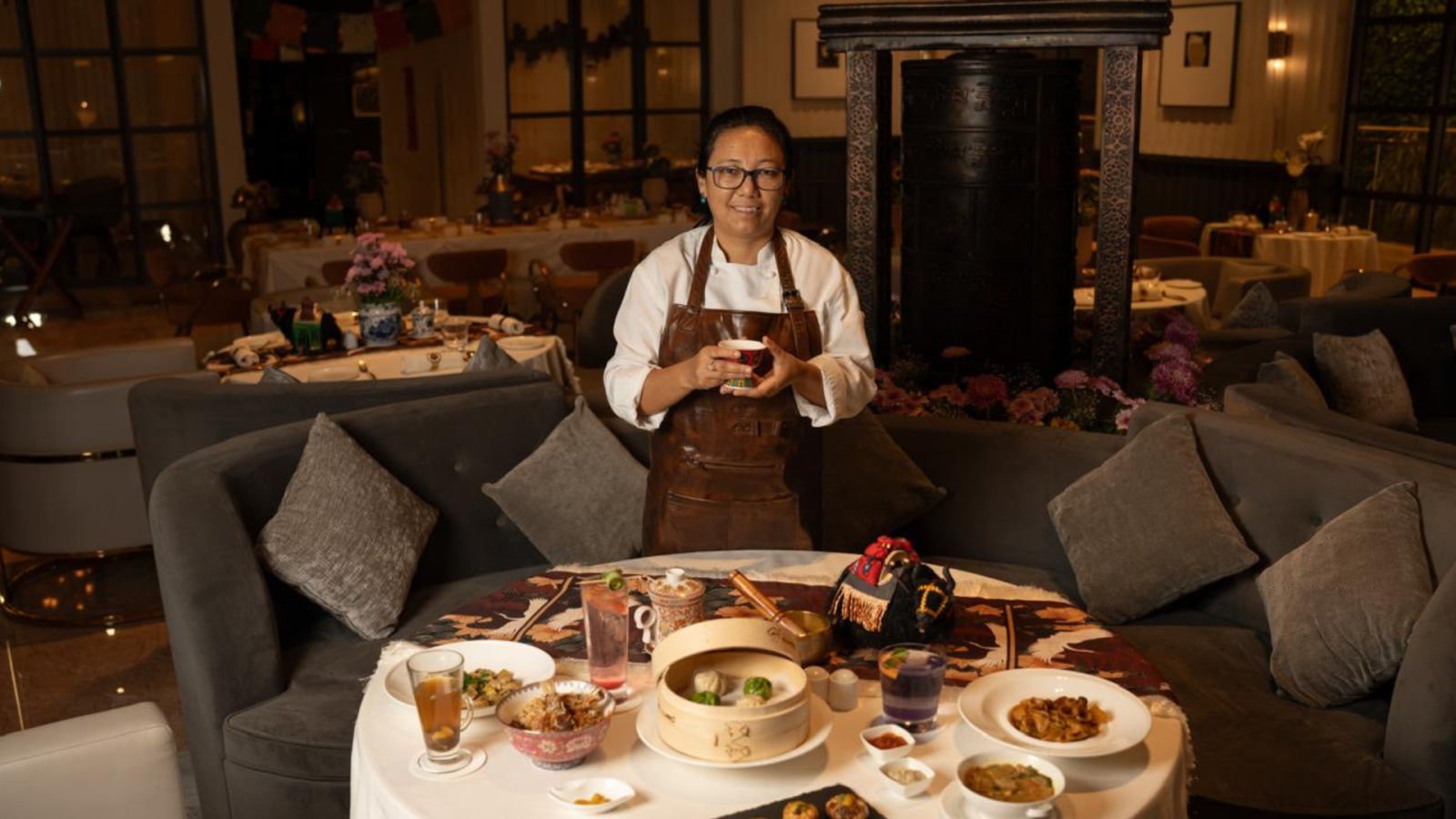
Foraging is a prominent culinary trend in the global dining scene. While it’s incredible to experience hyper-local produce at award-winning restaurants worldwide, it’s vital to remember that foraging has been integral to indigenous cuisines in almost all tribal communities of India for centuries. From Meghalaya and Assam in the Northeast to the rugged landscape of Ladakh and the forests of Jharkhand, communities have thrived due to their deep connection to seasons, forests, and locally available resources. Similarly, culinary buzzwords like ‘sustainability’ and ‘zero-waste cooking’ have been inherent practices in these communities for generations.
Today, highly trained international chefs discuss plant-based foods, local and seasonal produce, and nose-to-tail cooking. However, these have been inherent aspects of traditional cooking even in India’s most remote parts. We spoke to four champions promoting their regional cuisine, documenting it, educating others, and conducting restaurant pop-ups, to highlight indigenous ingredients, special dishes, and cooking techniques passed down through generations.
Revival Of The Forgotten Flavors Of Jharkhand
Jharkhand is home to 32 tribal communities, each with its own distinct food culture. “I’ve been able to document eight of these so far, but that’s just scratching the surface,” says Dr. Manisha Oraon. Not a typical food entrepreneur, Dr. Oraon is a dentist working in rural health, but her true passion lies in preserving Jharkhand’s tribal cuisines, long overshadowed and undocumented. Over the past six years, she has been on a personal mission to document, revive, and innovate upon the indigenous culinary traditions of her homeland. Her work stems from a growing concern of “forgotten identity,” as the traditional foods of Jharkhand—many of which are deeply sustainable and foraged from the forests—are disappearing from everyday lives, surviving only during ceremonies or festivals.
“When I went to the only restaurant in Ranchi that offers tribal food—Ajam Emba—I noticed that it served only the most basic dishes. None of the nuanced, seasonal, or ceremonial preparations were represented,” she laments. Another problem she notes is that people often equate Jharkhand’s food with dhuska or litti chokha, dishes that actually have their roots in the neighbouring state of Bihar. “Our food has a distinct identity that deserves recognition,” she states.
At the heart of traditional Jharkhandi meals is ‘maar jhor’, a staple across tribes in which the broth of an indigenous fibrous, low-glycemic brown rice is used to cook foraged greens. “We never had much access to pulses, so maar jhor became an important source of nutrition,” she explains. Meals also include chutneys, often made from bamboo shoots fermented in stages depending on the season and known locally as sandhana, and mashed preparations like chokha made from roasted tubers. Jharkhand’s cuisine also incorporates edible flowers found in forests, like roselle, kudrum, sania, and hemp flowers that are used in chutneys or added into the maar jhor. The culinary calendar is also in sync with the agricultural and religious one: “We worship trees, and through them, we honour the land and the food it gives us.”
Among the most underappreciated ingredients is mahua, a flower widely misunderstood as being used solely for making local liquor. “That stereotype of villages being alcoholic because of mahua is not only incorrect—it’s damaging,” she says. In reality, mahua has a wide range of uses. “Women eat three soaked mahua flowers in the morning to treat anaemia. We also dry them and use them as natural sweeteners or make them into candies and desserts,” explains Dr. Oraon. In one fascinating preparation, mahua flowers are slow-boiled for hours with roasted tamarind seeds and husk, forming a jaggery-like consistency used as a sweetmeat called mawa latha. “It’s what our people ate when there was nothing else. It was our dessert, a traditional treat,” she smiles. Mahua’s potential also extends to pharmaceuticals and cosmetics, with its seeds yielding oil used for burns and rashes, known locally as dori tel, akin to global shea butter.
Talking about global food trends, Dr. Oraon states that in many ways, Jharkhand’s food system has always been ahead of the curve. It champions nose-to-tail eating, fermentation, slow cooking, and zero-waste practices. It thrives on plant-based biodiversity, incorporates ancient grains like millets, and promotes climate-resilient crops. “We’ve been eating local, foraging, and preserving through sun-drying for generations—what the world is only now calling sustainable,” she says. With innovations like solar dehydrators, her farmer collective is now exploring ways to preserve ingredients more effectively while maintaining nutritional integrity. “We’re trying to combine traditional knowledge with modern techniques to protect what we have,” she says nonchalantly.
Meghalaya’s Tribal Dishes Find Space On Gourmet Tables
As the founder of Tribal Gourmet, A Northeast Indian Pop Up Kitchen, Tanisha Phanbuh’s mission is clear: not just to introduce people to the food of Meghalaya, but to change the way we think about indigenous cuisines from Northeast India. Based in Delhi but rooted in her Khasi heritage, she champions the region’s rich culinary diversity and deep traditions through pop-up kitchens and storytelling that highlight the nuances often overlooked in broader narratives.
“People tend to group all Northeast cuisines into one box,” she says, “but each state—and within them, each tribe—has distinct food traditions shaped by geography, history, and community.” In Meghalaya alone, the food of the Khasi, Jaintia, and Garo tribes varies not only in flavour but also in preparation. Khasi cuisine, for instance, is simple and straightforward, making it a great introduction for outsiders and first-time tasters, while Garo food reflects the state’s tropical climate, often using bolder, earthier ingredients.
A traditional meal in Meghalaya is based on steamed rice, accompanied by a variety of meat, greens, chutneys, and seasonal vegetables. “There’s an innate rhythm to how we eat,” Tanisha explains. “Summer meals are lighter—think stews with chicken or fish—while winters bring heartier fare, with pork, beef, and warming fermented bean pastes.” Interestingly, there’s a cultural preference to include bitter vegetables like bitter gourd or bitter eggplant at lunch, but not at dinner; such subtle dining rules have been passed down through generations.
What sets Meghalaya’s cuisine apart, especially for global audiences, is its deep reliance on hyperlocal and foraged ingredients. “Even in Delhi, I can access 40–50 unique ingredients each week from Northeast markets,” Tanisha says. Some standout elements include michinga, wild Sichuan pepper leaves prized for their heady aroma; tree tomatoes, tangier and meatier than conventional varieties; and sawtooth coriander, a sharper cousin of cilantro. Add to this an abundance of wild mushrooms, seasonal greens, and backyard herbs sourced from villages and forests, each telling a story of the land and the people who tend it.These traditional ingredients and methods are also remarkably in line with global food trends. “Fermentation, for example, is now seen as revolutionary,” she notes. “But we’ve been fermenting bamboo shoots, fish, and soybeans for generations.” Meghalaya’s respect for whole-animal cooking also mirrors the growing ‘nose-to-tail’ philosophy. Dishes like doh khlieh (pig brain salad) and ja doh (a pig’s blood in a risotto-like preparation) reflect not only ingenuity but a cultural reverence for resourcefulness and zero-waste cooking.
“In many ways, our food has been global before the world caught on,” Tanisha says with a smile. “I just wish more people knew about us, and that’s my lifelong goal.”
Ladakhi Cuisine Incorporates Warmth And Energy For The Harsh Climate
High in the trans-Himalayan region of Ladakh, the culinary tradition is deeply shaped by its geography, Buddhist culture, and the harsh yet beautiful climate of the mountains. Ladakhi cuisine is simple yet soul-nourishing with a strong focus on seasonality and sustainability. “Fermentation, drying, and sun-curing aren’t recent health fads here,” says Nilza Wangmo, founder of Alchi Kitchen, an all-women-run restaurant in Alchi. “They are time-honoured practices that our grandmothers taught us, methods that not only preserve food but also enhance its nutritional value, especially in a cold desert like Ladakh.”At its heart, Ladakhi food is an expression of resilience and harmony. Barley, the region’s staple grain, is transformed into dishes like phey or tsampa, while root vegetables, lentils, and wild greens are used in dishes that are as comforting as they are delicious. Even simple preparations like skyur, a fermented dough, or chhutagi, a hand-rolled pasta in a vegetable broth, reveal a delicate balance of texture and flavour. A typical Ladakhi meal is warm and filling, made with what is locally grown, especially essential in a place where winters are long and unforgiving. Flatbreads made from barley or wheat, broths such as thukpa, mokthuk, and chhanthuk, and generous helpings of mok mok (dumplings) make up daily meals. “Lunch might be a simple one-pot dish, but dinner is when the family gathers, especially in winter,” Nilza explains. Butter tea, locally known as gur gur cha, is consumed throughout the day offering both warmth and energy.
Local and foraged ingredients offer a rare insight into Ladakh’s biodiversity. Bright seabuckthorn berries (tsestalulu) bursting with Vitamin C, detoxifying nettles (zatsot), and the tangy native rhubarb (lachu) are not only delicious but also medicinal. Flavour enhancers like skotse (wild chives) and kornyot (wild cumin) deepen the sensory richness of Ladakhi food. These are ingredients that support immunity and well-being, principles now echoed in global wellness trends.
At Alchi Kitchen, the goal is clear: preserve the essence of Ladakhi cuisine while engaging in the global culinary conversation. “We’re deeply rooted in our traditions, but those traditions are now more relevant than ever,” says Nilza. “What the world is asking for—sustainability, plant-based diets, fermented foods, mindful eating—we’ve been doing for generations.” Their farm-to-table philosophy helps minimise food miles and maximise flavour by sourcing from local farms and foraging from the wild. But what sets Alchi Kitchen apart is its commitment to culinary storytelling. Every dish tells a story, that of a grandmother’s recipe, a family memory, or a harvest tradition. “In a fast-paced world, we offer a slow, immersive culinary experience that connects diners to the land, the people, and the past, mirroring the global trend toward experiential, mindful dining,” says Nilza.
The Simplicity, Sustainability, And Soul Of Assamese Home Food
For those who believe food tells the story of a place, Assamese cuisine offers a rich, deeply rooted narrative of heritage, ecology, and restraint. From foraged greens in forested villages to delicate fermentation techniques passed down through generations, Assamese food is a fine example of culinary subtlety and balance.
“As a food enthusiast with a passion for discovering indigenous cuisines, I find great joy in exploring the subtle nuances that define each culinary tradition. When it comes to my own Assamese cuisine, its uniqueness lies in the use of fresh, homegrown vegetables, a restrained yet thoughtful use of spices, and the emphasis on slow cooking techniques. These elements come together to create dishes that are not only deeply flavorful but also rooted in tradition and sustainability, making Assamese cuisine a true gem in the global gastronomic landscape,” says Parnashree Devi, a travel blogger who hails from Assam; she has been sharing the nuances of Assamese cuisine on various platforms.
Fresh, homegrown vegetables, seasonal herbs, and a nuanced use of spices are the cornerstones of this cuisine. Dishes are slow-cooked and designed to nourish. A traditional Assamese thali might feature the staple yellow daal, steamed rice, a mix of sautéed leafy greens (known locally as xaak), and simple but soulful sides like aloo pitika (mashed potatoes) or begun bhaja (fried eggplant). A more elaborate spread might include dishes like mati dail khar (a type of alkaline lentils), poita bhat (fermented rice), or kosuthuri kon bilahir logot, a rustic preparation of tender colocasia leaves with tangy cherry tomatoes. There’s also a wide variety of non-vegetarian fare such as lai xaak gahori (pork with mustard greens), til diya murgi (chicken with black sesame), and haah kumura (duck with ash gourd).
What makes Assamese cuisine so compelling on a global scale is its deep synergy with current culinary movements. “Farm-to-table cuisine is championed unequivocally as it’s a traditional way of life with the use of fresh herbs, wild greens, and locally sourced produce in daily cooking. Gut-friendly staples like fermented mustard seeds and poita bhat have been nourishing our people for centuries,” explains Parnashree. With its slow cooking methods, clean flavours, nutrient-dense dishes, and rich connection to land and heritage, Assamese cuisine is very much at par with global standards.
Related: Arunachal Pradesh Vs Assam — Which Northeast Indian Escape Is Right For You?
Note:
The information in this article is accurate as of the date of publication.
Written By
Restaurants & Food
Indigenous Indian Ingredients: Global Culinary Renaissance
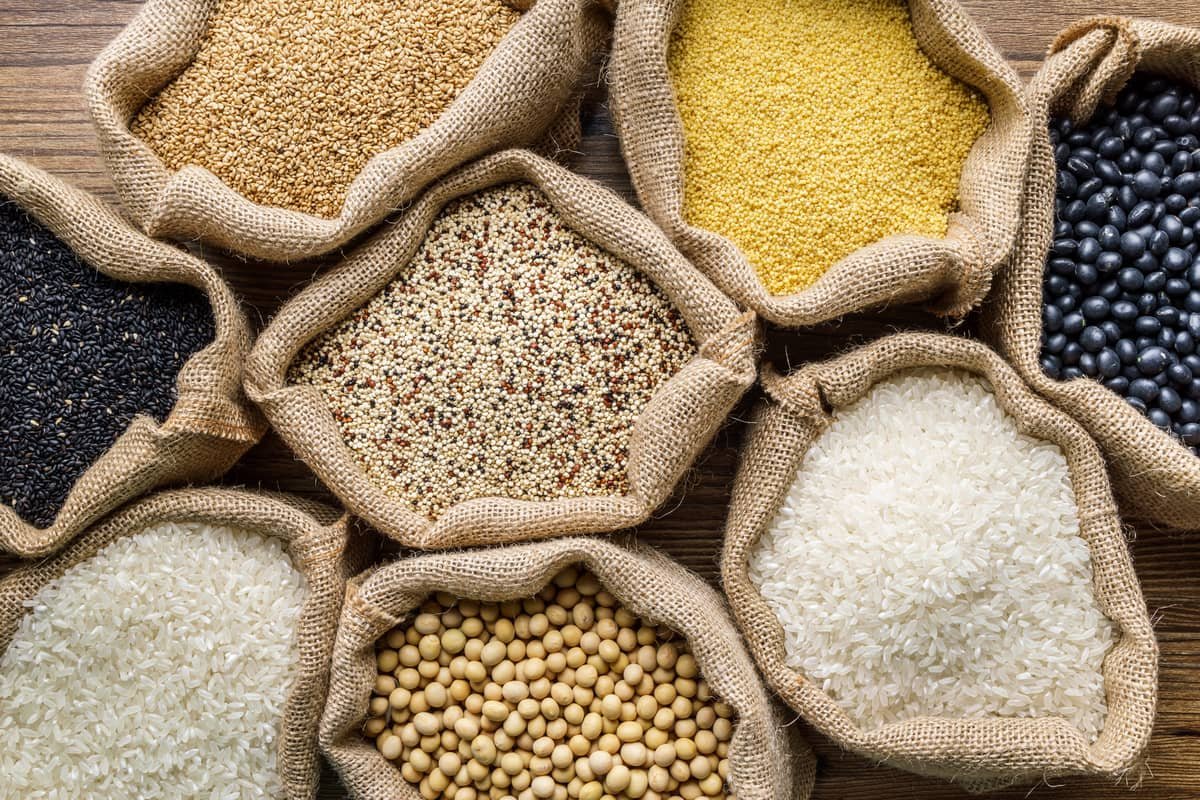
In recent years, the world has witnessed a renaissance of sorts in the culinary landscape — one that sees indigenous Indian ingredients and age-old cooking techniques stepping into the spotlight on global platforms. From Michelin-starred restaurants in London to boutique kitchens in Tokyo and New York, chefs are rediscovering the depth, complexity, and sustainability embedded in India’s food heritage. It’s not just about the curry any more — it’s about charcoal-grilled mustard fish from Bengal, Himalayan foraged greens, wood-fire-roasted meats from the Northeast, and millets made cool again.
From the forests of the Northeast to the spice fields of Kerala, India’s culinary landscape is rich with heritage, biodiversity, and flavours. And now, this once-local treasure trove is being celebrated on a global stage. Chefs, mixologists, and restaurateurs worldwide are not only using indigenous Indian ingredients but also reviving traditional cooking methods, giving them a place of prestige on international platforms. A deep dive…..
Indigenous Indian Ingredients on the Global Plate
India’s food culture is deeply rooted in local produce — often wild, seasonal, and medicinal. Today, the culinary world is embracing these ingredients for their nutritional value, flavour complexity, and cultural richness. Here are some of the most popular indigenous ingredients making waves globally:
Millets, long considered “poor man’s grain”, are enjoying a global resurgence. The UN declared 2023 as the International Year of Millets, and chefs like Rohit Ghai (of London’s Kutir and Manthan fame) are featuring dishes like millet khichdi with truffle oil and foxtail millet upma on refined tasting menus.
Jackfruit, often dubbed as a meat alternative, has become a darling of the plant-based movement. While traditionally cooked as kathal ki biryani or dry sabzi in Indian households, jackfruit tacos and BBQ-style pulled jackfruit are now found in global chains like Wagamama and even Whole Foods pre-packaged meals.
Indigenous Chillies: From bhoot jholokia to guntur, a variety of Indian chillies have made a mark on global menus. A promising example would be the use of Naga chillies at Tabla by Chef Floyd Cardoz and in chutneys at Dhamaka, New York.
Mahua: Another widely used indigenous staple, the mahua flower as well as mahua extract have found their way into menus such as in Ekaa, Mumbai, which uses it to flavour pork belly and desserts.
From Kalari to Churpi, and Kalimpong, India boasts of native varieties of cheeses and chefs have now started popularising them in gourmet dishes. Indian cheesemakers such as Kumaoni Blessings have been popularised by celebrated chefs including Gary Mehigan of MasterChef Australia fame.
Kokum, a souring agent from the Konkan belt, is increasingly being used in wellness drinks and cocktail infusions across upscale bars from Melbourne to Miami. The ingredient’s antioxidant properties and tangy punch have caught the attention of beverage curators like Alex Kratena in Europe, who incorporated kokum shrub into one of his tropical-inspired menus.
A Return to Roots: Traditional Cooking Techniques
Alongside the rise of ingredients is the rebirth of long-forgotten traditional cooking techniques. Indian cooking, often described as complex and laborious, is being re-examined with reverence by chefs and food historians all over the world. The return to slow-cooking, wood-fire, fermentation, and earthenware cooking reflects a global yearning for authenticity.
The Dum Pukht style — slow cooking in a sealed pot — has made its way into fine-dining kitchens from Dubai to Paris. At Trèsind Studio in Dubai (Michelin-starred), Chef Himanshu Saini reinterprets classic Indian dishes using traditional methods like dum to extract deep, soulful flavours. His version of lamb nihari cooked over 12 hours is a masterclass in patience and technique.
The bhuna, dhungar (coal smoking), and tandoori techniques are being reappropriated beyond Indian restaurants. Asma Khan, owner of London’s Darjeeling Express, often demonstrates the traditional use of smoking a dish with a coal and ghee to infuse richness — a method being embraced by food stylists and chefs worldwide for its dramatic flair and depth of aroma.
India’s nuanced approach to fermentation — from idli-dosa batter to rice kanji and achaar — is finally being understood as a sophisticated form of food science. Chefs like David Zilber (former head of fermentation at NOMA, Copenhagen) have referenced Indian pickling and fermentation techniques in his work, acknowledging their precision and diversity.
In New York, Semma, helmed by Chef Vishwesh Bhatt and backed by the team behind Michelin-starred Dhamaka, serves regional Indian fare from Tamil Nadu — all cooked in traditional clay pots. Their goat curry, simmered in earthenware, delivers an earthy depth that steel just can’t match.
Meanwhile, banana-leaf grilling — a staple in Kerala, Tamil Nadu and even Bengal (don’t forget the bhetki paturi!) — is now a theatrical and eco-friendly cooking style found in Thai-Indian fusion eateries in Sydney and LA, as well as London.
Restaurants harnessing Indian heritage:
Semma, New York City
Semma in NYC has redefined Indian cuisine in America by boldly spotlighting hyper-regional, home-style dishes from South India that are rarely seen on Western menus. Led by Chef Vijay Kumar and backed by the Unapologetic Foods group, the restaurant dives deep into the culinary traditions of Tamil Nadu, offering rustic, ancestral recipes like Nathai Pirattal (snail curry) and Venison Sukka. Its unapologetic celebration of authenticity — without diluting spice or storytelling — has earned Semma a Michelin star and positioned it as a cultural force changing the narrative of Indian food in the US.
Snail Curry at Semma, NYC
TresInd, Dubai
TresInd has pioneered a progressive Indian fine-dining movement in Dubai, fusing avant-garde techniques with deeply rooted Indian flavours. Helmed by Chef Himanshu Saini, the restaurant brings molecular gastronomy and modern plating into play while staying true to traditional ingredients and stories. Dishes like the deconstructed pani puri or khichdi of India pay homage to regional classics in a new-age format, making TresInd a trailblazer in elevating Indian food to haute cuisine status in the Middle East.
A5 Wagyu striploin prepared like the classic Pathar Kebab at TresInd, Dubai
Benares, London
Opened by acclaimed chef Atul Kochhar, Benares was one of the first Indian restaurants in the UK to receive a Michelin star, signaling a shift in how Indian cuisine was perceived in the UK. Nestled in the upscale Mayfair district, Benares champions a refined interpretation of regional Indian flavours, marrying them with British ingredients in elegant, globally-influenced dishes. Through its thoughtful menus and stylish presentation, Benares has been instrumental in placing Indian food firmly on the fine-dining map of London, moving it beyond curry-house clichés to culinary prestige.
Murg Jhol Momo served with Foie Gras at Benares, London
Avatara, Dubai
Avatara holds the distinction of being the first and only fully vegetarian Indian fine-dining restaurant in Dubai to receive a Michelin star. Created by the team behind TresInd, it reimagines India’s spiritual and culinary vegetarian roots through a multi-course tasting menu that is both seasonal and deeply philosophical. Chef Rahul Rana leads a kitchen that honors forgotten grains, temple foods, and Ayurveda-inspired techniques, presenting a narrative that shifts the focus from indulgence to introspection while showcasing the diversity of India’s plant-based traditions.
Klaayah, a melange of Bengali green pea luchi with shisho leaves, creamy green pea chokha and mustard-carrot jhol with a touch of green caviar at Avatara, Dubai
Enter Via Laundry is one of Melbourne’s most exciting and intimate dining experiences, founded by Chef Helly Raichura. What began as a private supper club hosted in her home has evolved into a refined restaurant celebrating regional Indian flavours through a carefully curated degustation menu. Located in Fitzroy North, the space retains its personal, almost clandestine charm — true to its name, guests literally enter through the laundry. The multi-course meals take diners on a journey across India’s diverse culinary landscape, featuring lesser-known ingredients and techniques rarely seen in mainstream Indian cuisine. With only a handful of seats available per night, Enter Via Laundry offers not just a meal, but a cultural narrative plated with precision and heart.
Kerala-style appetisers at Enter Via Laundry, Melbourne
Chourangi in London brings the bold, aromatic flavours of Calcutta to the heart of Marylebone, offering a refined and soulful take on Eastern India’s rich and diverse culinary heritage. Co-founded by celebrated restaurateur Anjan Chatterjee, the restaurant captures the spirit of Calcutta — a city known for its layered cultural influences — through a menu that draws inspiration from British, Mughlai, Bengali, and even Chinese cuisines. Dishes are crafted with over 300 spices and ingredients, showcasing everything from tangy street-style chaats and delicate seafood to robust slow-cooked meats and fragrant rice preparations. Set in a warm, stylish space with colonial-era touches, Chourangi blends nostalgia with modern finesse, introducing London diners to a lesser-explored side of Indian cuisine.
A Bengali classic, the Daab Chingri at Chourangi, London
A Culinary Identity Reclaimed
The rise of indigenous Indian ingredients and traditional cooking techniques on global platforms is more than a food trend — it’s a cultural reclaiming. For years, Indian food abroad was simplified, Anglicised, or relegated to takeaways. Today, it’s being elevated with nuance and integrity.
Chefs like Garima Arora, Prateek Sadhu, Asma Khan, Sujan Sarkar, and Chintan Pandya are unapologetically showcasing India’s diversity — not just through ‘classic dishes’ but through ancient methods, foraged ingredients, and tribal wisdom. It’s a movement rooted in pride. A movement that understands that the future of food may well lie in the past.
Chef Prateek Sadhu (left) of Naar and Chef Manish Mehrotra, known as the man behind Indian Accent and Comorin, both have been the champions of Indian ingredients as well as techniques. While Mehrotra put Indian dishes on the world map, Sadhu, on the other hand, is on a quest for bringing Himalayan biodiversity to the plate, Sadhu sources rare ingredients like sea buckthorn, black garlic from Ladakh, and local grains. His work emphasises sustainability and terroir.
Vikas Khanna has long been a torchbearer of India’s culinary arts, and through his international ventures, he’s brought temple cuisine, ancient grains, and tribal recipes into Michelin arenas with Junoon in New York and now the recently opened Bungalow in New York as well.
Garima Arora, India’s first female Michelin-starred chef, continues to bring techniques like open fire-roasting and fermentation to the fore at Gaa in Bangkok.
Chintan Pandya, whose restaurants Dhamaka, Adda, and Rowdy Rooster in New York have received immense acclaim, is unafraid to serve bold, unapologetically spicy Indian food — including items like goat kidney and liver fry, or Champaran mutton cooked in sealed clay pots.
Asma Khan is making Calcutta and her culinary roots from Awadh shine with her celebrity and even royalty-acclaimed spot Darjeeling Express in London. Her all-women kitchen is popular for dishes like the Calcutta-style dum biryani that masters the art of dum and slow cooking.
Pictures: Instagram and iStock
Restaurants & Food
Food beyond the fame – Lifestyle News
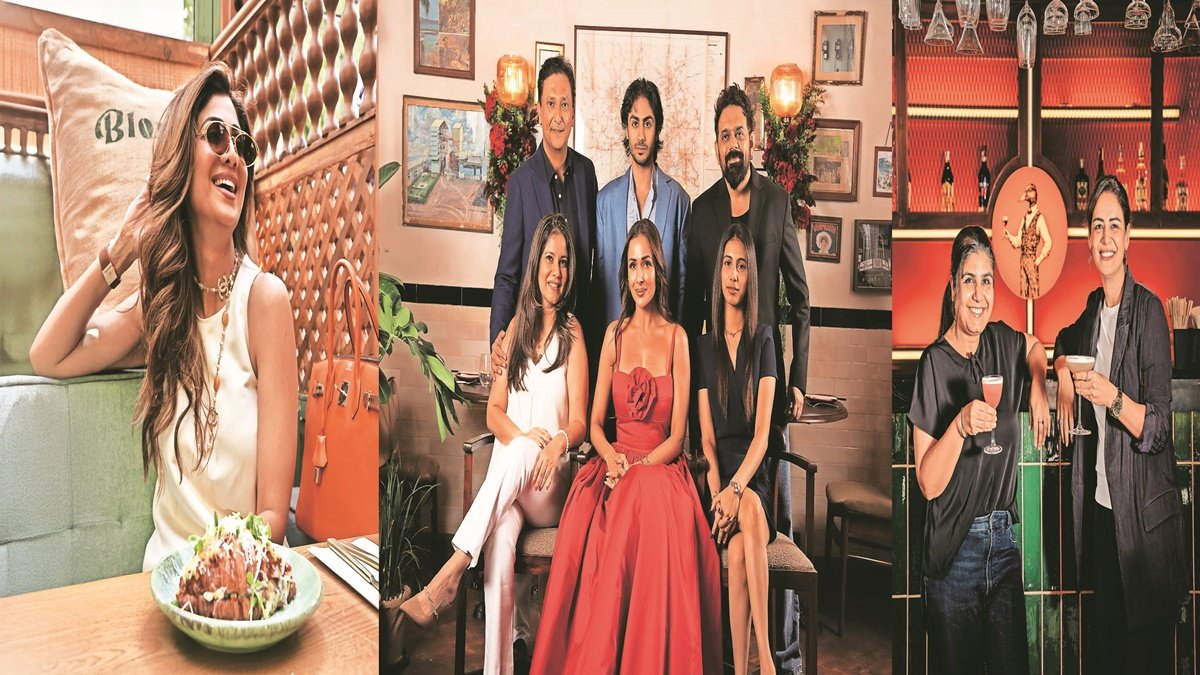
By Nikhil Merchant
The idea of celebrities owning restaurants in India isn’t new. We still remember the early-2000s’ buzz around Someplace Else in Mumbai, co-owned by Bobby Deol, or the excitement when Sachin Tendulkar opened his namesake restaurant in partnership with hotelier Sanjay Narang. Around the same time, Suniel Shetty’s H2O: The Liquid Lounge was another hotspot, driven less by food and more by the hope of spotting a star. Back then, these places were more like fan experiences than serious dining destinations.
A New Wave of Star-Backed Ventures
But something’s shifted. Over the past few years, we’ve seen a different kind of celebrity-owned establishment emerge—one with clearer intent, stronger partnerships, and deeper personal storytelling. Today’s celebrities aren’t just lending their names; they are curating spaces, investing time in the concept, and working alongside experienced professionals to shape something that resonates beyond the usual expectations.
There’s nostalgia, branding, and the careful projection of a public persona—all channelled through food. So what’s really driving this new wave of celebrity-led dining ventures? Why step into a business known for its high failure rate, even with money and fame in your corner? And when the allure fades, what really keeps these places standing?
It starts innocently enough. You’re at a restaurant—the interiors are swanky, with an air of glamour, metallic or mirrored glints, it’s all a bit surreal and elegantly showy. You pick up the menu and there it is—the name. Not printed (too gauche), but in the carefully italicised whispers floating through the air. “You know it’s their place, right?”
Dining With Identity and Intent
India’s celebrity-led hospitality boom has traded the old-school dazzle for a more curated kind of fame—a space where stars descend from front of camera into raw business, seeking solace in an industry that still knows how to keep you in the limelight. But if you think these are just vanity projects laundered with truffle fries, think again—the profit-and-loss sheet is very real.
Back in the day, it was Arth that hinted at what was possible. Designed by Gauri Khan, it became a two-pronged sensation—her high-design polish (and the chance to bump into her husband), paired with chef Amninder Sandhu’s signature fire-cooked menu. Today, names like Gaurav Batra—brand head at True Palate Hospitality—carried on that evolution. “We don’t just start blindly or star-struck,” he says. “We start with the guest—and ask, what are they hungry for that the market isn’t feeding?” His projects include filmmaker Karan Johar’s Neuma in Mumbai and now Jolene in Goa by Amrita Arora. “With Amu, we weren’t chasing flash-in-the-pan virality. We wanted something people came back to,” he adds.
If Amrita was enchanting the coast, her sister Malaika Arora brought poise to Mumbai. Her venture, Scarlett House, is what she calls “quiet and warm luxury,” converting a landmark bungalow in a village in Bandra to a haven of coziness and comfort, much like an elegant home.
“We focused on elevated simplicity,” she says, adding: “The idea was to build a high-touch experience with a strong word-of -mouth appeal —something that lasts longer than hype.” Co-founded with her son Arhaan, it’s equal parts elegance and Gen-Z fluency—from music to digital UX.
Batra isn’t slowing down either. He launched One8 Commune with ace cricketer Virat Kohli—a pan-India, premium-yet-approachable brand. Meanwhile, Yuvraj Singh —the World Cup-winning all-rounder with a knack for comebacks—follows suit with his latest venture in Gurgaon, KOCA. Inspired by childhood staples like kadhi chawal and rajma, he calls it a “culinary playground” grounded in the discipline and teamwork that defined his cricketing years. “Building KOCA required meticulous planning and collaboration,” he says. This foundation has been instrumental in shaping KOCA’s ethos and operations.
The narrative shifts when we consider the work and ideologies behind these celebrity-backed concepts—they steer clear of unapproachable appeal and instead veer towards community and acceptance. Kona Kona in suburban Mumbai, founded by actor Mona Singh and consulting chef Jasleen Marwah, is a bar-forward space which exudes comfort and attracts the notion of community. “I didn’t want fancy,” says Singh. “Just a place where people feel at home.” The menu blends Indian and popular global flavours in their truest form—shareability. Think childhood flavours in a modern bar setting. Both Singh and Marwah, shaped by peripatetic upbringings, have poured their collected food memories into every plate and corner.
Meanwhile, Shilpa Shetty’s Bastian Hospitality has evolved significantly since its inception, pushing boundaries in luxury dining—immersive, ever-relevant, and always a few steps ahead. “Bastian has always stood for more than just dining,” she says. “We wanted to meet today’s discerning, global diner with concepts that feel fresh, thoughtful, and exquisite,” she adds.
That same philosophy is applied in the brand’s new sibling, Blondie—a specialty café in Bandra. “Blondie was born out of a desire to create something more intimate, more everyday—a space that speaks to the culture of casual, community-driven dining,” she says. With a cool menu to boot, including ceremonial-grade matcha and beans sourced from 45 women farmers in Chikmagalur, Blondie brings resourceful and sustainable thought processes to trending tastes.
Nikhil Merchant is a Mumbai-born food and beverage expert, consultant and writer.
Disclaimer: Views expressed are personal and do not reflect the official position or policy of FinancialExpress.com. Reproducing this content without permission is prohibited.
-

 Brand Stories8 hours ago
Brand Stories8 hours agoBloom Hotels: A Modern Vision of Hospitality Redefining Travel
-

 Brand Stories8 hours ago
Brand Stories8 hours agoHow Olive Group of Hotels Is Redefining Wellness Travel in India—And Why the World Is Watching
-

 Destinations & Things To Do1 day ago
Destinations & Things To Do1 day agoUntouched Destinations: Stunning Hidden Gems You Must Visit
-

 AI in Travel1 day ago
AI in Travel1 day agoAI Travel Revolution: Must-Have Guide to the Best Experience
-

 Brand Stories2 weeks ago
Brand Stories2 weeks agoVoice AI Startup ElevenLabs Plans to Add Hubs Around the World
-

 Brand Stories1 week ago
Brand Stories1 week agoHow Elon Musk’s rogue Grok chatbot became a cautionary AI tale
-

 Asia Travel Pulse2 weeks ago
Asia Travel Pulse2 weeks agoLooking For Adventure In Asia? Here Are 7 Epic Destinations You Need To Experience At Least Once – Zee News
-

 AI in Travel2 weeks ago
AI in Travel2 weeks ago‘Will AI take my job?’ A trip to a Beijing fortune-telling bar to see what lies ahead | China
-

 Brand Stories2 weeks ago
Brand Stories2 weeks agoChatGPT — the last of the great romantics
-

 Brand Stories2 weeks ago
Brand Stories2 weeks agoHumans must remain at the heart of the AI story

